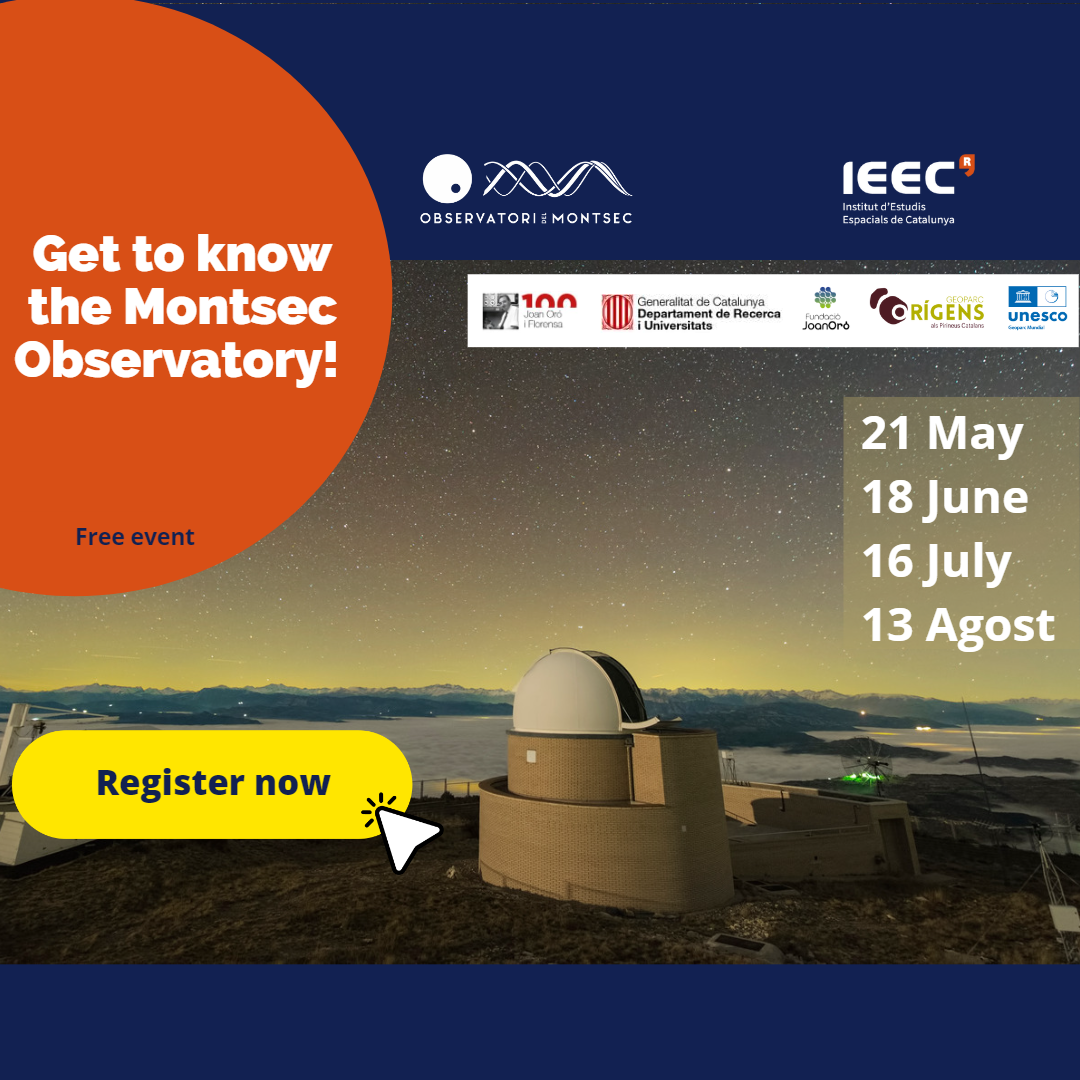The guided tours of the Montsec Observatory are back

Its facilities are reserved for scientific use and, therefore, are closed to the general public. But several days a year, the Observatory opens its doors.
These sessions offer the opportunity to take a tour to the Observatory's infrastructure and equipment, such as its astronomical telescopes, among them the Joan Oró Telescope (in honour of the well-known biochemist from Lleida), satellite communications infrastructure, Earth Observation satellite calibration systems, and atmospheric measurement services, all of them based on innovative technologies.
IEEC astronomers will explain how the equipment works, what scientific discoveries have been made recently, and how communication with nanosatellites is carried out.
The guided tours of this 2023 will be held on the following days:
- Sunday 21 May at 12:00 pm
- Sunday 18 June at 12:00 pm
- Sunday 16 July at 12:00 pm
- Sunday 13 August at 12:00 pm
The duration of the visit is approximately 1 hour, and it is free. Since places are limited, prior registration is required!
We look forward to seeing you there!

Joan Oró commemorative year
These visits are part of the Joan Oró year celebration, to commemorate the centenary of the birth of this famous biochemist from Lleida, one of the most important scientists of the 20th century who dedicated his career to the study of the origin of life, where he made significant contributions which have inspired later generations of scientists.
His discovery in 1959 of how a primitive Earth could have manufactured adenine, one of the main components of DNA and crucial to cellular energy-generating processes, made him an internationally renowned figure.
His reputation was further strengthened by his consultancy work for NASA on the Apollo moon projects and, in particular, on the design of the Viking missions to Mars and his correct interpretation of their results.
